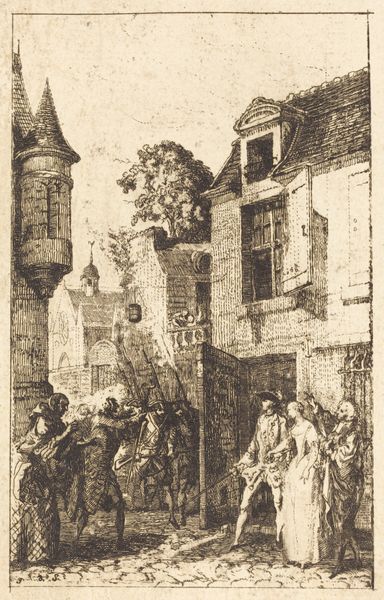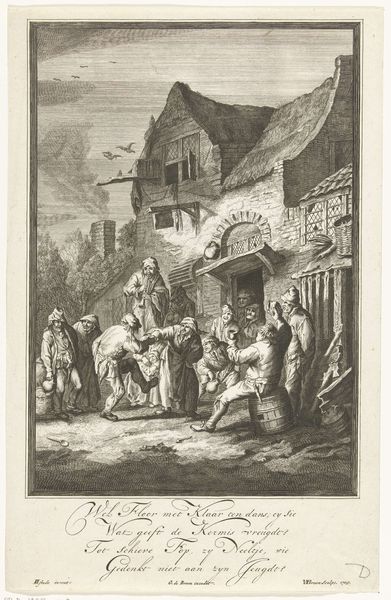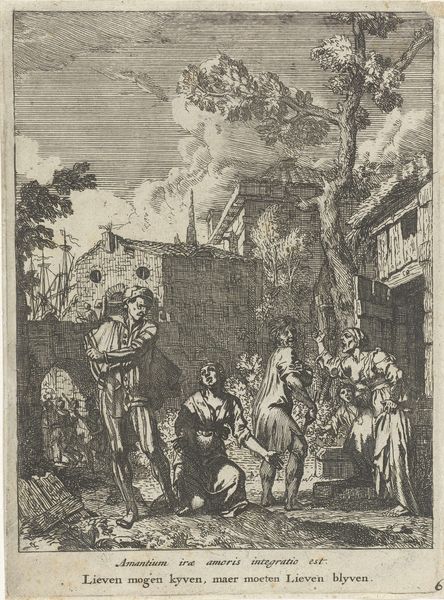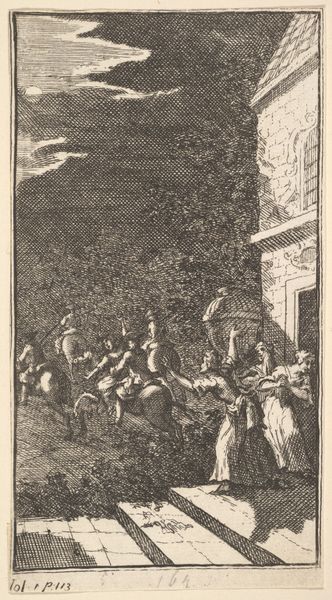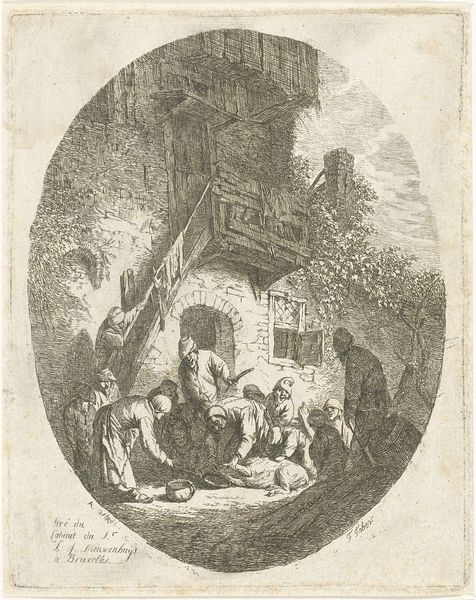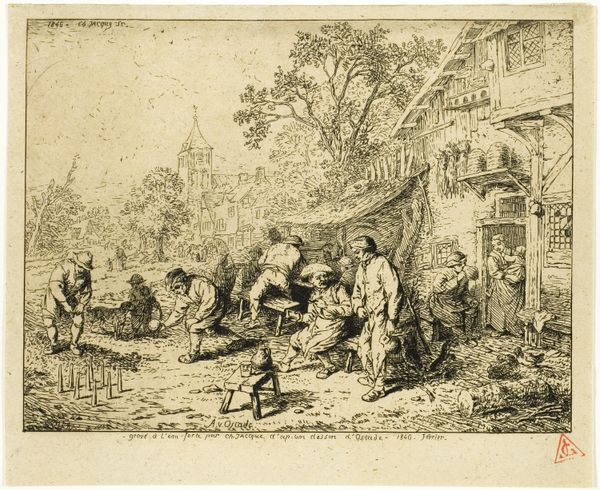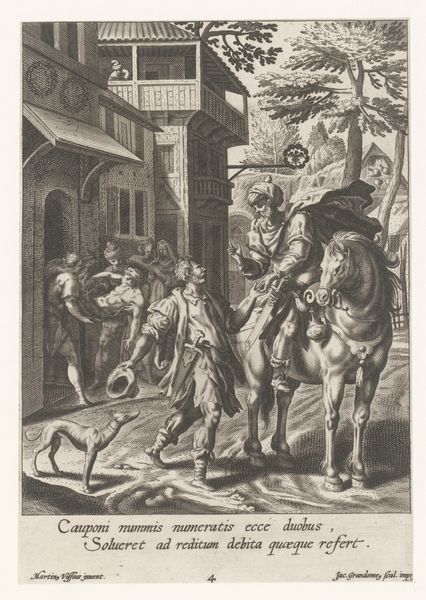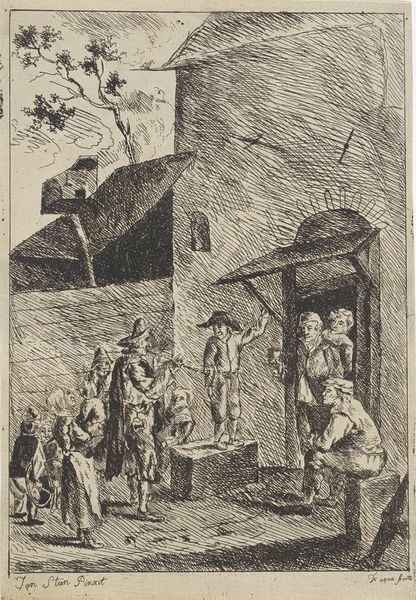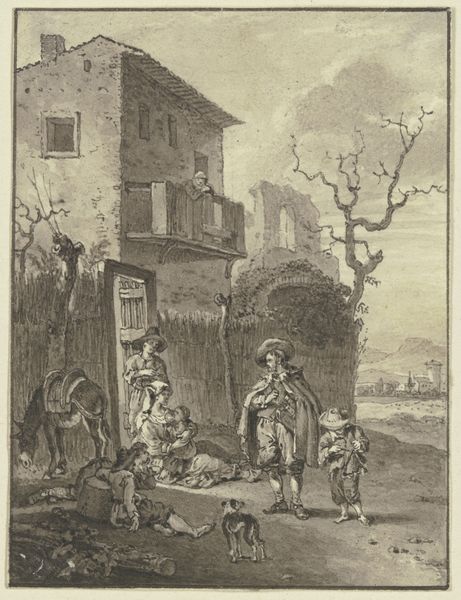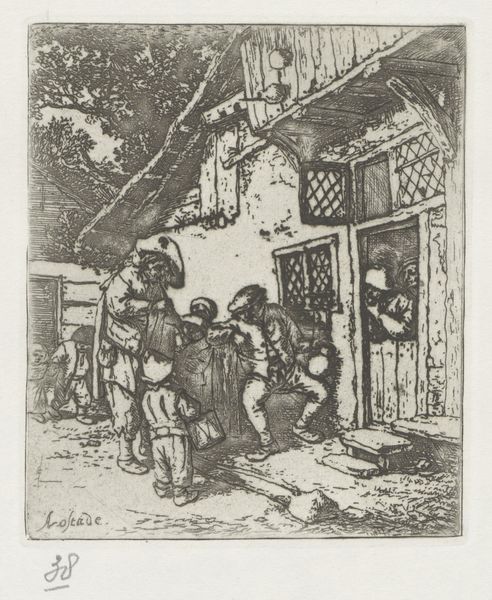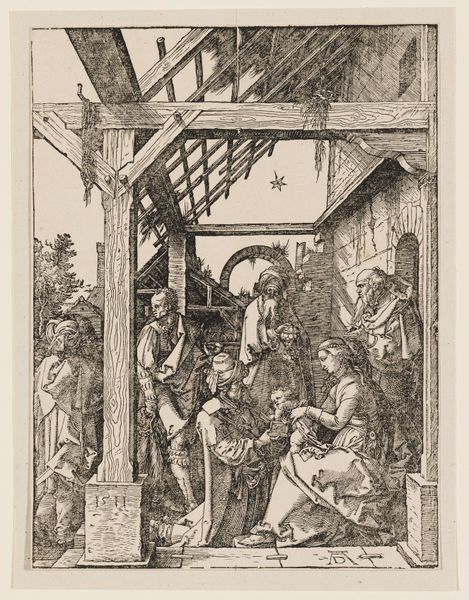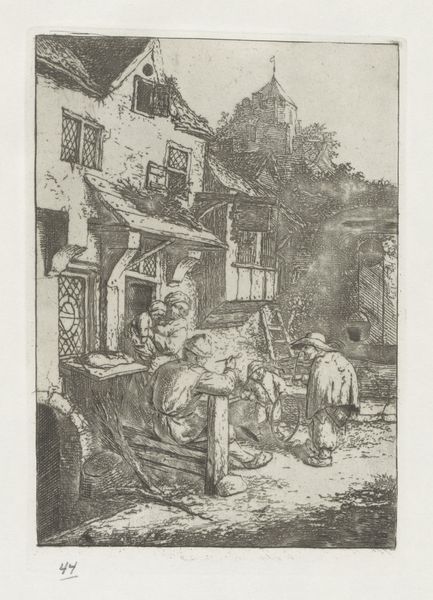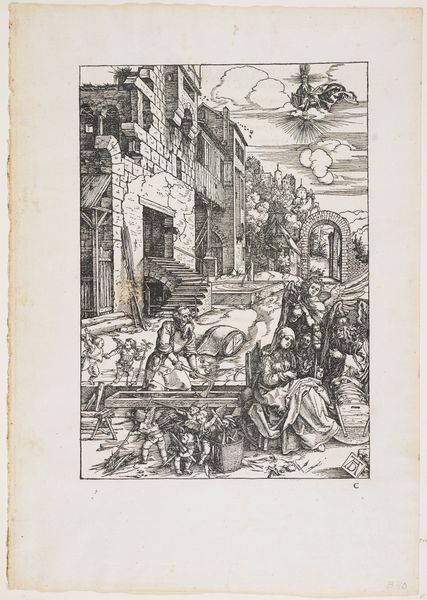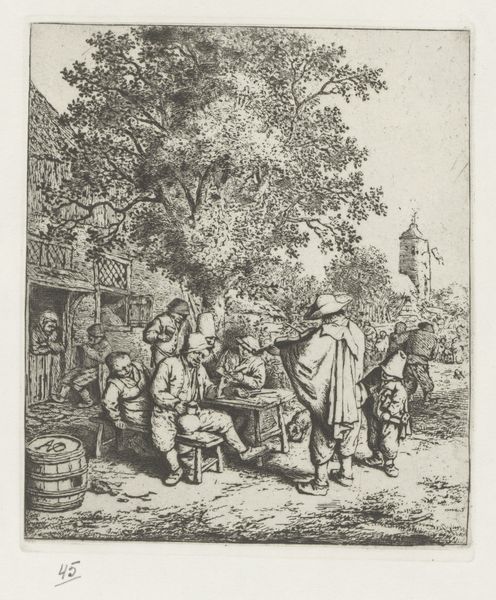
drawing, print, etching, paper
#
drawing
# print
#
etching
#
figuration
#
paper
#
cityscape
#
genre-painting
#
history-painting
#
rococo
Dimensions: 124 × 82 mm
Copyright: Public Domain
Curator: Welcome. Here we have Gabriel de Saint-Aubin’s etching and print, “One Never Thinks About It At All,” created in 1761. Editor: Immediately, I'm struck by how densely populated and busy it is, despite the limited grayscale of the etching. The atmosphere feels fraught, maybe a bit oppressive? Curator: It’s fascinating to consider the etcher's process in creating this feeling, particularly given Saint-Aubin's wider output. Etchings, being prints, would have allowed the rapid dissemination of this scene. Editor: True. Focusing on the imagery itself, what strikes me is the convergence of figures: the central couple, those who appear to be soldiers, and other witnesses, perhaps even mourners? Their body language and placement are laden with symbolism. The soldiers' raised rifles definitely contribute to the oppressive feeling. Curator: Yes, the material conditions of its making give insight. This was reproduced and widely consumed. Now that makes us ask: How does the act of reproducing and witnessing trauma change the way it's felt and understood? Does mass availability diminish or amplify its power? Editor: The visual vocabulary Saint-Aubin employs seems self-conscious. Rococo favored more lightness and ornamentation, but he emphasizes a certain architectural somberness that looms. And what does the discarded floral arrangement represent on the couple? Curator: I would argue this is not the frothy Rococo of Fragonard; we are talking about print production here, the marketplace. The use of etching for prints allowed Saint-Aubin a certain economy and reproducibility in creating complex imagery in this era of heightened commerce. This scene suggests societal commentary rather than just an airy depiction of leisure. Editor: Very true. Considering the discarded flowers, I suspect this references ideas around marriage or remembrance, perhaps even the loss of innocence, or the illusion of pastoral bliss shattered by harsher realities. I'm curious what Saint-Aubin hoped to achieve through this visual allegory, given that evocative title: "One Never Thinks About It At All". Curator: Well, it suggests that a great deal should be considered, a societal mirror. By understanding its original mode of creation and viewing it today, we understand not only a visual artifact but a critical point of view, and the very conditions by which art shapes history and mirrors commerce. Editor: The symbols have such potency even now. Thank you. Curator: Thank you for highlighting the rich symbolic layers that the materials helped make accessible to a wider audience.
Comments
No comments
Be the first to comment and join the conversation on the ultimate creative platform.
